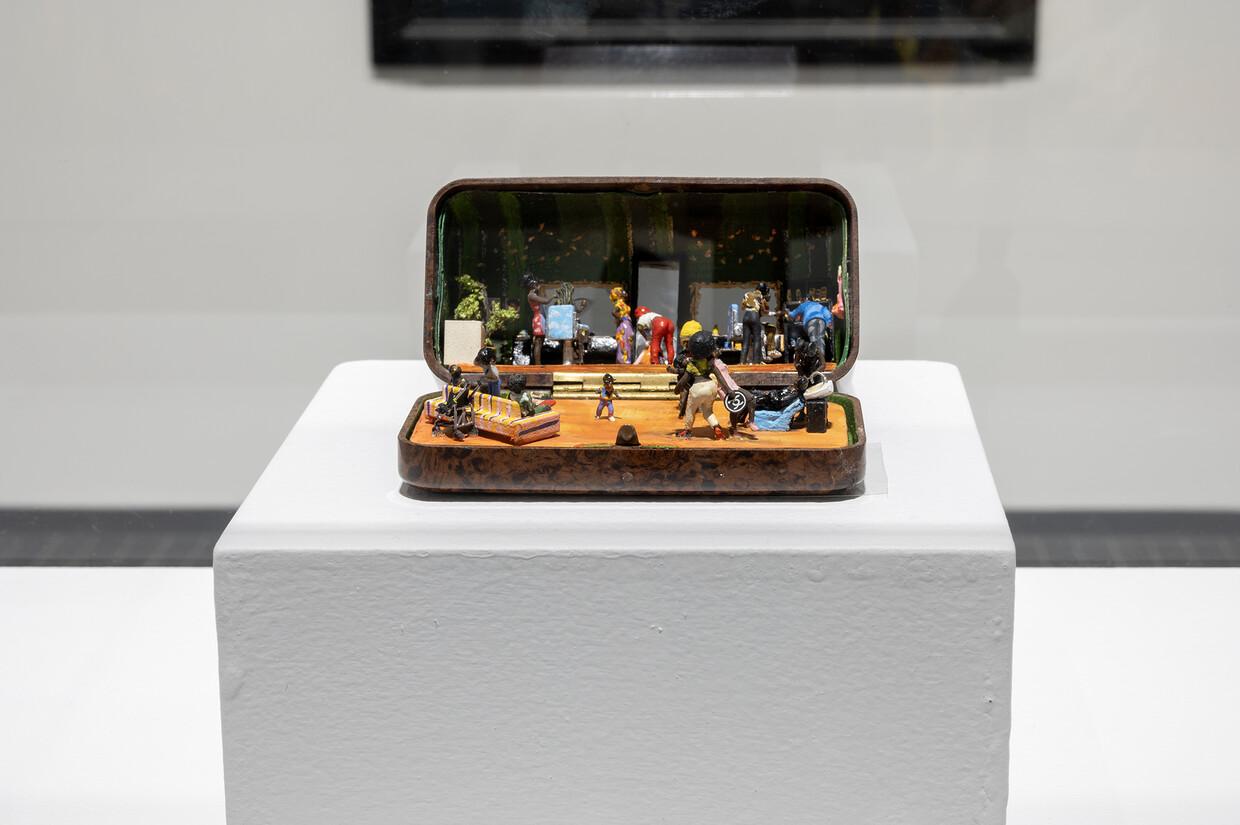Like most milestone celebrations, Act 3: Words to Worldmaking, currently on view at the Art Gallery of Alberta, is an exhibition that looks both to the past and the future. It’s the third and final act in a trilogy celebrating the gallery’s hundredth birthday, which took place in 2024, and like Act 1: Earth to Eternity and Act 2: Landscape to Land Use, the third exhibition is comprised of works by Alberta artists currently held in the gallery’s collection.
As the show’s title suggests, text plays an important role in Words to Worldmaking. Many of the works feature words, written, signed or spoken. But the curators were also interested in broader modes of communication — how we interact, express ourselves, come together, fall apart.
One of the first works in the exhibition is Jane Ash Poitras’s From Riel to Peltier, an expansive canvas that layers oil and acrylic paint, colour laser prints and stamps. It is a vibrant work that uses the interplay of text and visual media to address a long history of injustice and indigenous resistance. It is also one of a number of early works in the exhibition that draws on themes of conflict and war.
Like many of the pieces in Act 3, Poitras’s work speaks to the systemic and the political, while also invoking the personal and the interpersonal. It addresses not just to the nature of conflict, but how it shapes those affected by it.
A neighbouring gallery dedicated to work and play houses a number of photographs documenting everything from miners at work to kids playing in backyards. When I toured the exhibition with co-curator Lindsey Sharman, she drew my attention to 1 Swim – 2 Cents Each, a square format photograph by Henry Singer. In the image, a young, shirtless entrepreneur charges another boy for a swim in his inflatable backyard pool. Like many of the works in this section of the show, the photograph feels nostalgic, representing a moment (and perhaps a way of life) now lost to time. This, of course, is the nature of photography, but that feeling — of temporal displacement — also speaks to how much work and leisure time have changed over the last century.
